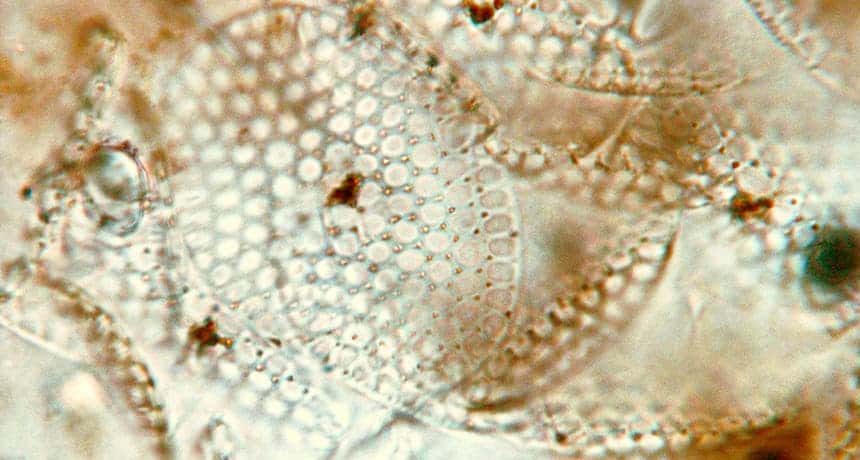The oldest evidence of biomineralization has been discovered 200 million years earlier than previously thought.

Image credits P. Cohen.
Talking at the Geological Society of America’s annual meeting on September 27, paleobiologist Phoebe Cohen described the oldest known fossilized eukaryotes. The “apatitic scale microfossils”, discovered in the Fifteenmile Group in Yukon, Canada, are layered out in armor-like sheets of mineral plates which formed about 809 million years ago — making them the oldest evidence we have of organisms using biomineralization for protection.
This new date of the shift towards biomineralization reflects changing ecosystems — there’s little point in building a shell if no one tries to eat you — coinciding with the end of a period known as the “boring billion” (the Mesoproterozoic era in science-speak). It also shows changing chemical conditions in the oceans at the time. Shelled creatures today trap a lot of carbon, forming an important part of the modern carbon cycle — as the critters die, their shells sink to the bottom of the ocean, removing this element from the atmosphere.
“We have been able to identify specific conditions that facilitated the evolution of the first eukaryote to biomineralize in Earth’s history,” Cohen, who studies ancient ecosystems at Williams College in Williamston, Mass, said.
“It paints a beautiful picture of the ecology and evolution and environmental conditions that led to this dramatic innovation.”
Previous evidence suggests eukaryote biomineralization appeared around 560 million years ago in primitive coral-like animals. But in those times, organisms built their shells very differently than how they organisms go about it today. The discovery of these fossils thus offers insight into how shell building first evolved, Cohen added.
The fossils were first retrieved in the late 1970s, and even then many paleontologists believed that they hinted at an earlier start for biomineralization. But the dating techniques of the day couldn’t pinpoint their age very accurately, and scientists couldn’t rule out the possibility that the minerals they were dating were there before the organisms died. Cohen and her team revisited the fossils — by dating shale rich in organic material a few meters below the fossil in the rocks, they determined their age at 809 million years old.
Using an electron microscope, they determined that each plate was weaved out of elongated mineral fibers. This structure is too orderly not to have been made by living organisms, Cohen said. They’re made of calcium phosphate, unlike modern shells which are built from calcium carbonate. Today, phosphate is scarce in the environment and it’s too valuable for microbes to waste it.
An electron microscope let researchers see that each plate is a weave of elongated mineral fibers. This intricate, orderly design had to have been purposefully built by life manipulating mineral formation, Cohen said. But 809 million years ago, oxygen levels in the water fluctuated wildly, an analysis of the surrounding rocks showed. This pulled phosphates from the sediment into the waters, so it was in plentiful supply.
Together with the emerging threat of predators, this abundance of phosphate drove eukaryotes to bunker up, Cohen said. Environmental changes eventually lead to these intrepid shell-builders going extinct.


